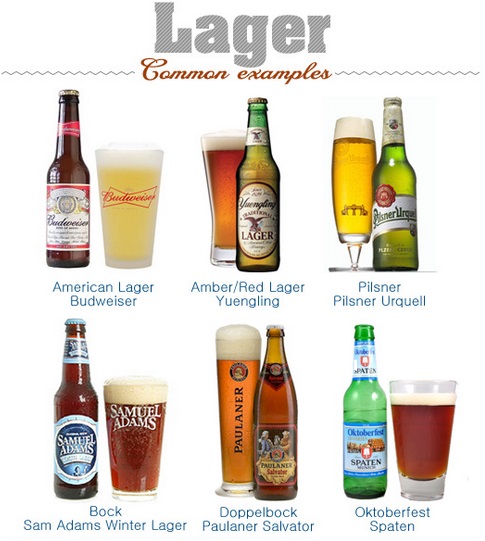For the Beer Enthusiast
Lager Beer vs. Ale Beer—Does It Matter?

If you inquire of the average beer geek about the differences between ale and lager, you will probably be told that ale is brewed with top-fermenting yeast (Saccharomyces cerevisiae) and lager with bottom-fermenting yeast (Saccharomyces uvarum). End of conversation.
But there’s much more to tell. First of all, ale and lager are both beers; that is, they are fermented from grain. The major difference between these two beer families stems from the temperature at which fermentation is carried out. And the importance of these differences in temperature is that chemical reactions happen more slowly at lower temperatures.
The science of chemical change tells us that for each increase of 18 degrees Fahrenheit/10 degrees Celsius, the speed of chemical change is doubled; a similar decrease, and the speed of change is halved. But when the temperature goes above 104 degrees F/40 degrees C, or falls below 58 degrees F/15 degrees C, most yeast will be in trouble.
Brewers generally want their beer to attenuate (convert sugar to alcohol) slowly in the ferment, thus changes will take place over a longer period of time. Hence, they tend to keep fermentation temperatures as low as possible, particularly in the aging process after attenuation is, for the most part, complete.
S. cerevisiae is the most common yeast out there. Variants of this yeast are used in bread making, winemaking and other common formulations. We think of it as the original beer yeast, used in the production of all original beer styles dating back to early Babylonian times—the original or natural yeast used in ale beer production. It is the universal yeast, appearing world wide, even into the Antarctic.
We call it “top fermenting” or “ale” yeast: it ferments throughout the body of the beer wort, rising first to the surface (where it can be harvested). In time, it will sink to the bottom of the fermentation vessel, remaining after the finished beer is removed. This yeast also has greater tolerance to alcohol, hence it is capable of producing stronger (higher alcohol content) beers.
Saccharomyces uvarum—so called “bottom fermenting” or “lager” yeast—is more fragile. It ferments throughout the body of the beer wort and settles to the bottom of the vessel at the end of that process. The wonder of bottom fermenting yeast is that, in addition to being very fragile, it attenuates more slowly and to a lesser extent than ale yeast. Not only that, but it has lower alcohol tolerance and almost no ability to sporulate (form cysts of one to three cells that are surrounded by a protective wall as protection against cold). Without this protection, it will continue to work at fairly cool temperatures, even below 39 degrees F/3 degrees C. It has the additional ability to ferment the sugar melibose, an ability missing in the top fermenting “ale” yeast.
These traits might appear to be a disadvantage for this yeast strain, and in some ways they are. But the effect is to leave a greater remnant of sugar in beer. Combined with the very slow attenuation, this results in better clarification, a more full-bodied beer with far fewer esters and a better and more mellow palate. The final result of all that is the wonder of so-called “lager” beer (from the German lagern: to store), a beer that is crisper in character and less fruity in aroma than ale. If the only beer you had ever tasted were heavy and hoppy ale beer, lager would indeed be a revelation to you. Bottoms up!
Source: All About Beer Magazine - Volume 29, Issue 5 - November 1, 2008
